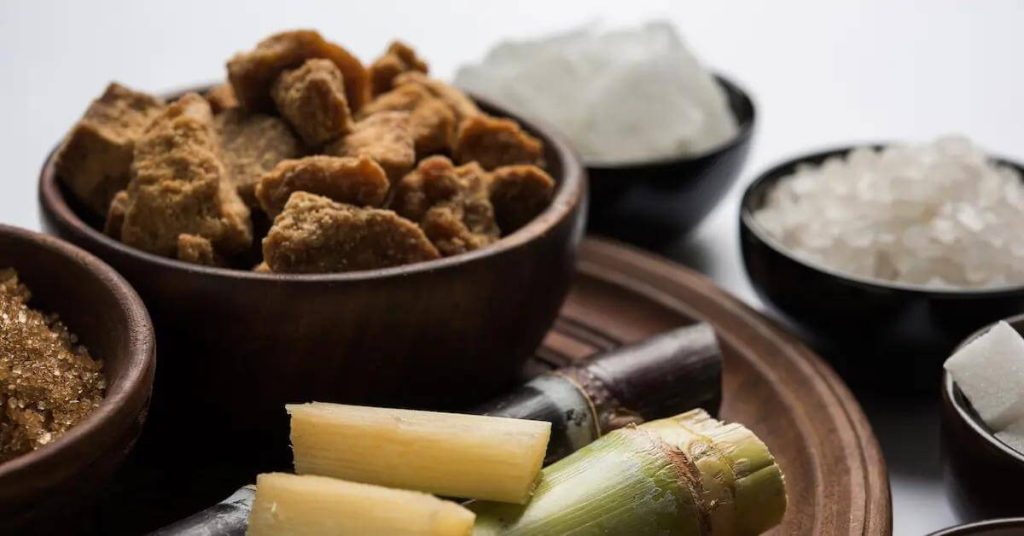Cane Sugar Processing: Typical Techniques and Modern Innovations
Cane Sugar Processing: Typical Techniques and Modern Innovations
Blog Article
An Extensive Overview to the Environmental Effect and Sustainability Practices in Walking Stick Sugar Processing
The ecological impact of walking stick sugar processing offers an intricate selection of challenges that warrant cautious evaluation. From dirt degradation and excessive water use to the carbon impact linked with farming and manufacturing, the consequences of traditional methods are significant. What specific practices can be applied to strike an equilibrium between efficiency and environmental stewardship?
Introduction of Walking Cane Sugar Handling
Walking stick sugar processing involves a collection of systematic actions that transform sugarcane right into refined sugar. Originally, collected sugarcane is transferred to processing centers, where it goes through cleaning up to eliminate dirt and particles. Following this, the walking stick is squashed to extract juice, which is after that clarified by getting rid of pollutants via heating and the addition of lime.
The made clear juice undergoes dissipation, where water is eliminated to focus the sugar material. This focused syrup is after that taken shape with air conditioning, enabling sugar crystals to create. These crystals are separated from the remaining syrup making use of centrifugation, leading to raw sugar. To accomplish refined sugar, the raw product undertakes additional purification procedures, which might include washing and filtering system to get rid of remaining impurities and color.
The last product is then dried and packaged for distribution. Throughout this entire procedure, keeping performance and high quality control is necessary to ensure the sugar fulfills industry requirements. Each step in walking stick sugar processing not only contributes to the last product yet likewise has ramifications for resource usage and waste generation, establishing the phase for conversations on sustainability and ecological influences connected with sugar manufacturing.
Ecological Difficulties of Manufacturing
The production of walking cane sugar presents several considerable environmental obstacles that warrant focus. One key issue is the substantial use agrochemicals, including plant foods and chemicals, which can lead to soil destruction, biodiversity loss, and contamination of local water sources. The runoff from sugarcane fields commonly brings these chemicals into close-by environments, interrupting aquatic life and affecting the health of communities reliant on these water bodies.
One more challenge is the high power intake related to sugarcane handling. The boiling and refining stages need significant warmth, largely generated by melting nonrenewable fuel sources, adding to greenhouse gas exhausts. Furthermore, the extensive acreage needed for sugarcane farming can lead to deforestation and habitat devastation, further intensifying climate modification and threatening wild animals.
Moreover, the labor methods in some regions increase moral problems, as employees might encounter poor working conditions and inadequate earnings. This circumstance typically perpetuates a cycle of destitution in local neighborhoods. Cane Sugar Processing. Attending to these ecological difficulties is important for developing much more lasting methods in walking stick sugar production, inevitably profiting both the setting and the neighborhoods involved in this industry
Water and Land Use Effect
Water resources and land usage are essential components in the walking stick sugar industry that significantly affect the setting. The farming of sugarcane requires significant water input, with price quotes suggesting that it can consume up to 2,000 liters of water per kilogram of sugar created. This intensive usage of water commonly brings about exhaustion of regional water sources, impacting not only the sugarcane vineyards but also surrounding ecological communities and communities that rely on the exact same water resources for farming and residential use.

In addition, land usage for sugarcane farming can cause deforestation and the conversion of all-natural environments into monoculture plantations. This method decreases biodiversity, interrupts neighborhood environments, and contributes to dirt degradation. The development of sugarcane fields typically elbows in on useful farming land, creating competition for resources between food and biofuel production.
Lasting techniques, such as enhancing irrigation strategies and executing crop rotation, are essential to reduce these impacts. By adopting much more effective water use and land monitoring approaches, the walking stick sugar sector can lower its eco-friendly footprint, making certain a balance between farming productivity and environmental conservation.
Greenhouse Gas Emissions
Greenhouse gas exhausts represent a significant environmental issue within the cane sugar processing market, especially as agricultural methods expand to satisfy worldwide demand. The farming of sugarcane, a my site plant that grows in tropical climates, depends greatly on synthetic fertilizers and chemicals, which add to laughing gas discharges. In addition, land-use changes, consisting of deforestation for brand-new sugarcane haciendas, release carbon dioxide kept in plants and soil.
During handling, power usage is one more major resource of greenhouse gas discharges - Cane Sugar Processing. Lots of sugar mills utilize nonrenewable fuel sources to power equipment and produce heat, resulting in substantial carbon footprints. Furthermore, the transportation of raw sugarcane and completed items includes layers of exhausts through fuel combustion in vehicles
The cumulative result of these emissions aggravates climate change, presenting threats not only to the environment yet also to the long-term stability of the market. Stakeholders must recognize the urgent demand for comprehensive strategies that deal with these discharges. This entails assessing existing farming practices, processing techniques, and transport systems to identify areas for enhancement and mitigation. Resolving greenhouse gas exhausts is crucial for fostering a more sustainable cane sugar industry in a changing environment.

Lasting Practices and Innovations
Sustainable practices and innovations are progressively vital in the cane sugar handling market as stakeholders seek to reduce environmental influences while maintaining performance. One substantial innovation is the application of integrated plant monitoring, which optimizes source usage by incorporating soil administration, bug control, and plant turning strategies. This strategy improves yield while minimizing chemical inputs and preserving soil health.
Moreover, the fostering of renewable resource sources, such as biomass from sugarcane deposits, has actually obtained traction - Cane Sugar Processing. By over at this website converting waste items into power, refining centers can decrease their reliance on fossil fuels, thus lowering greenhouse gas exhausts
Water management practices have actually additionally seen renovations via the recycling and reusing of water in processing plants, dramatically lowering freshwater usage. Advancements in modern technology, such as accuracy agriculture, enable farmers to check crop health and source use extra successfully, ensuring sustainable farming methods.
Additionally, qualification programs like Fair Trade and Rain forest Alliance motivate ecologically responsible farming methods and advertise social equity within the supply chain. By embracing these lasting techniques and technologies, the walking stick sugar processing market can enhance its durability and add positively to ecological stewardship.
Final Thought
The environmental influence of walking cane sugar handling offers significant challenges, consisting of soil deterioration, high water consumption, and greenhouse gas exhausts, alongside moral concerns connected to labor techniques. Resolving these issues with sustainable techniques, such as incorporated crop management, eco-friendly power fostering, and water recycling, is essential. By advertising eco accountable and socially fair approaches in sugar manufacturing, the industry can minimize its unfavorable effects, ensuring an extra lasting future for both neighborhoods and ecological communities entailed in this industry.
Walking stick sugar handling involves a series of organized steps that change sugarcane into polished sugar. Each step in cane sugar handling not only moved here adds to the final product yet also has implications for source usage and waste generation, setting the stage for conversations on sustainability and ecological impacts associated with sugar manufacturing.
Greenhouse gas discharges represent a substantial ecological worry within the cane sugar handling industry, particularly as agricultural methods expand to meet worldwide demand.Sustainable practices and advancements are significantly crucial in the walking cane sugar processing industry as stakeholders look for to lower ecological effects while maintaining efficiency.The ecological influence of cane sugar processing offers significant obstacles, consisting of dirt degradation, high water consumption, and greenhouse gas exhausts, along with honest problems connected to labor methods.
Report this page